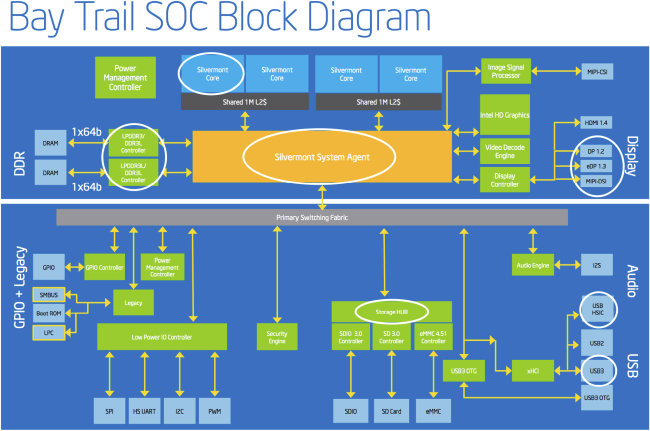Bay Trail SoCs are new low power Intel ICs for tablets (Bay Trail-T, Z3000 series), mobiles (Bay Trail-M, N2800, N2900 and N3500 series), desktops (Bay Trail-D, J1800, J1900 and J2900 series) and embedded / industrial platforms (Bay Trail-I, E3800 series). Many Atom processors used to features PowerVR GPU, but it has now been replaced by Intel HD graphics in Bay Trail SoC.

Jesse Barnes, working at Intel on software and drivers for Intel graphics devices, gives a presentation about Bay Trail SoCs with a focus on graphics. After an overview, and some ARM bashing regarding performance (Nvidia Tegra 4 and Qualcomm Snapdragon 800), and even power consumption (Tegra 4 only), he describe further details about Intel HD graphics found in the new Intel processors. Everything is basically in mainline, and you’ll need Linux 3.10 or greater, Mesa 9.2 or greater, and libva 1.2.1 or greater for proper support. Some initial GPU benchmarks showed somewhat disappointing results, but in this talk, Jesse explains some parts of the drivers still need performance improvements, as they only run at half the expected speed. VP8 support (hardware decode?) is work in progress in VP8.
He also mentioned available hardware platform with Windows 8.x tablets already available, and Android tablets becoming available later this year, except in China where you can already buy Bay Trail Android tablets…
Presentation slides are not available.

Jean-Luc started CNX Software in 2010 as a part-time endeavor, before quitting his job as a software engineering manager, and starting to write daily news, and reviews full time later in 2011.
Support CNX Software! Donate via cryptocurrencies, become a Patron on Patreon, or purchase goods on Amazon or Aliexpress




